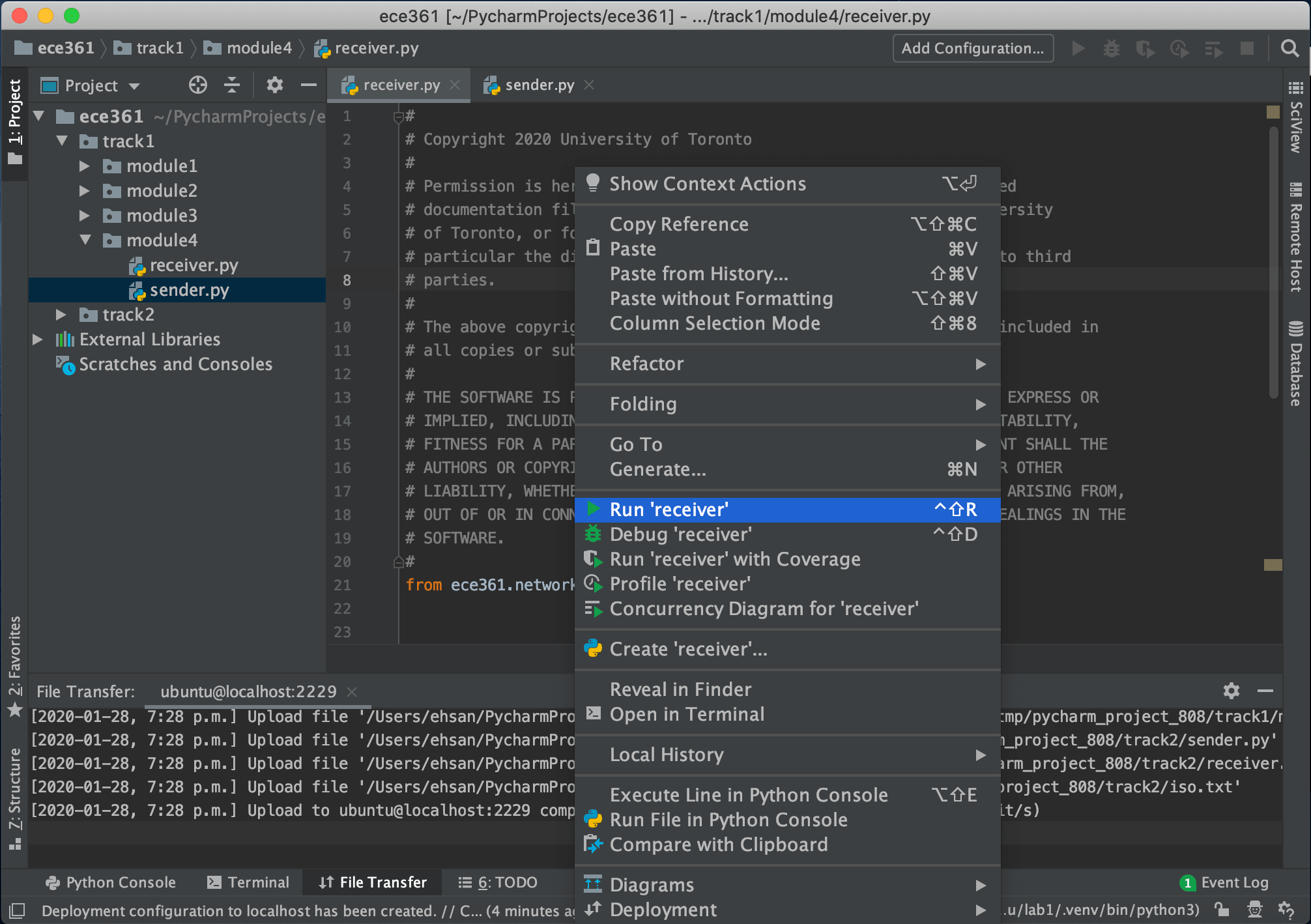
- PYCHARM REMOTE DEVELOPMENT INSTALL
- PYCHARM REMOTE DEVELOPMENT ARCHIVE
- PYCHARM REMOTE DEVELOPMENT UPGRADE
This step is to assign what python running environment you would like to use in your server. Setup it by following the P圜harm tutorial of the remote connection to the server, which is shown as below: P圜harm->Preference->Project: nameofyourproject->Project Interpreter: Open up your laptop and connect it to the same local network as your stationary machine.
PYCHARM REMOTE DEVELOPMENT INSTALL
sudo vim /etc/ssh/sshd_config X11Forwarding yes Step2: Install GPU driver, Cuda, Cudnn (if you did not install) Step3: Install Anaconda with Keras, Tensorflow, Pytorch on the server (if you did not install) Set your local computer Open up a terminal on your stationary computer and get it: sudo apt-get install sshĮnable SSH X11-forwarding so that you can plot things, open the configuration file like this. In order to be able to communicate with your local-machine, you need to install SSH on it. Thus, this step may be not needed for you. Note: In most cases, your machine should already be able to connect the server with ssh. Adding Assemblyline specific configuration ¶ Assemblyline folders ¶īecause Assemblyline uses its own set of folders inside the core, service-server, and UI container, we have to create the same folder structure here so that we can run the components in debug mode.Remote data crunching machine Step1: Setup SSH (if you did not install or use ssh before) We will use its content to log into the Docker daemon from your desktop.
PYCHARM REMOTE DEVELOPMENT ARCHIVE
The archive file ~/certs/certs.tgz will have to be transferred to your desktop. Tar czvf certs.tgz ca.pem cert.pem key.pem # Create an archive with the client certs Sudo su -c 'echo "# /etc/systemd/system//nf ExecStart= ExecStart=/usr/bin/dockerd -H fd:// -tlsverify -tlscacert=/etc/docker/certs/ca.pem -tlscert=/etc/docker/certs/server-cert.pem -tlskey=/etc/docker/certs/server-key.pem -H 0.0.0.0:2376" > /etc/systemd/system//nf'Ĭurl -cert ~/certs/cert.pem -key ~/certs/key.pem -cacert ~/certs/ca.pem # Add system.d override configuration for Docker to start the TCP with TLS port # Moving server certs to their permanent location

# Change private and public key permissionsĬhmod -v 0400 ca-key.pem key.pem server-key.pemĬhmod -v 0444 ca.pem server-cert.pem cert.pem Rm -v client.csr server.csr extfile.cnf extfile-client.cnf Openssl x509 -req -days 365 -sha256 -in client.csr -CA ca.pem -CAkey ca-key.pem -CAcreateserial -out cert.pem -extfile extfile-client.cnf Openssl req -subj '/CN=client' -new -key key.pem -out client.csrĮcho extendedKeyUsage = clientAuth > extfile-client.cnf Openssl x509 -req -days 365 -sha256 -in server.csr -CA ca.pem -CAkey ca-key.pem -CAcreateserial -out server-cert.pem -extfile extfile.cnf Openssl req -subj "/CN=assemblyline.local" -sha256 -new -key server-key.pem -out server.csrĮcho subjectAltName = DNS:assemblyline.local,IP: `ip route get 8.8.8.8 | grep 8.8.8.8 | awk '' `,IP:127.0.0.1 > extfile.cnfĮcho extendedKeyUsage = serverAuth > extfile.cnf Openssl req -new -x509 -days 365 -key ca-key.pem -sha256 -out ca.pem -subj "/C=CA/ST=Ontario/L=Ottawa/O=CCCS/CN=assemblyline.local" # Creating the server public/private key Openssl genrsa -aes256 -out ca-key.pem 4096 # Create a certificate-signing request (ignore the. # Create a CA (Remember the password you've set)


PYCHARM REMOTE DEVELOPMENT UPGRADE
How-to: Upgrade Service Updater for Assemblyline 4.1+ Adding Assemblyline specific configuration


 0 kommentar(er)
0 kommentar(er)
